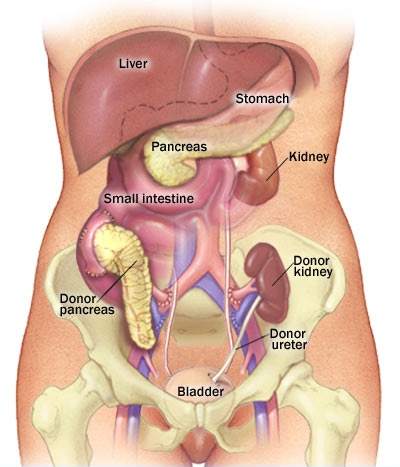Binghampton University students in New York have attempted to create an artificial pancreas using 3D bioprinting. It is hoped the artificial pancreas could be used to treat type 1 diabetes.
Diabetes is a condition that relates to the production of insulin in the pancreas. There are two types, 1 and 2, with type 1 diabetes meaning the pancreas is unable to produce insulin. While type 2 diabetes means the body is not using the insulin in the correct way. For this reason pancreas transplants, though rare, are typically performed on type 1 diabetes patients.

Pancreas transplants
Transplanting the pancreas organ is not usually necessary for patients with type 1 diabetes as traditional treatment with insulin injections is usually adequate. However pancreas transplants will be performed on some patients, particularly if they also have a severe kidney disease as the two organs can be transplanted at the same time. Another reason for transplanting the pancreas is if the patient also suffers from hypoglycaemia, severe glucose deficiency.
While currently conventional pancreas transplants involve the use of a donor organ, the Binghampton University students hope their bioprinting efforts may change this in the future. Working on this project was biomedical engineering student Thomas Hays, who explains that if “you have Type 1 diabetes, you can’t just get a new pancreas and call it a day.”
Maybe in the future, they will be able to take your own cells, if you have Type 1 diabetes, print this organ for you — which is your own cells — and put it back in your body.

3D printed pancreas
The bioprinted pancreas has been researched by a group of biomedical engineering students led by Thomas Hays. Joining Hays, was Kyle Reeser a second year graduate student and Sebastian Freeman, a fourth-year Ph.D. student. Speaking to student newspaper BU Pipe Dream, Thomas Hays explained the pancreas bioprinting.
The goal is to take a stem cell, differentiate that into a pancreatic cell, or whatever cell you need, and then put it in a reservoir. Then they can print that into 3-D layers to create your final organ. You have to have vasculature in there, too. It’s hard to nail down just a few things to put in [the printer], but it is a lot of cells and growth factors.
The pancreas would require autologous cells, meaning cells taken from the patient and grown in order for the organ to be accepted by the patient’s body. In a similar way, researchers from the University of Tokyo are bioprinting functional human mini-livers. The bioprinted organs are intended for research or as the subject of drug testing.
Elsewhere scientists from the Chalmers University of Technology, in Sweden are also looking to treat a condition with bioprinting. The scientists are developing 3D bioprinted cartilage tissue to treat osteoarthritis.
The 3D Printing Industry Awards is now just weeks away, so make sure you place your votes to decide this year’s winners.
To receive the latest news on medical 3D printing advancements, sign up to our newsletter and follow us on twitter and Facebook.
Featured image shows a model of the human body highlighting the pancreas.


